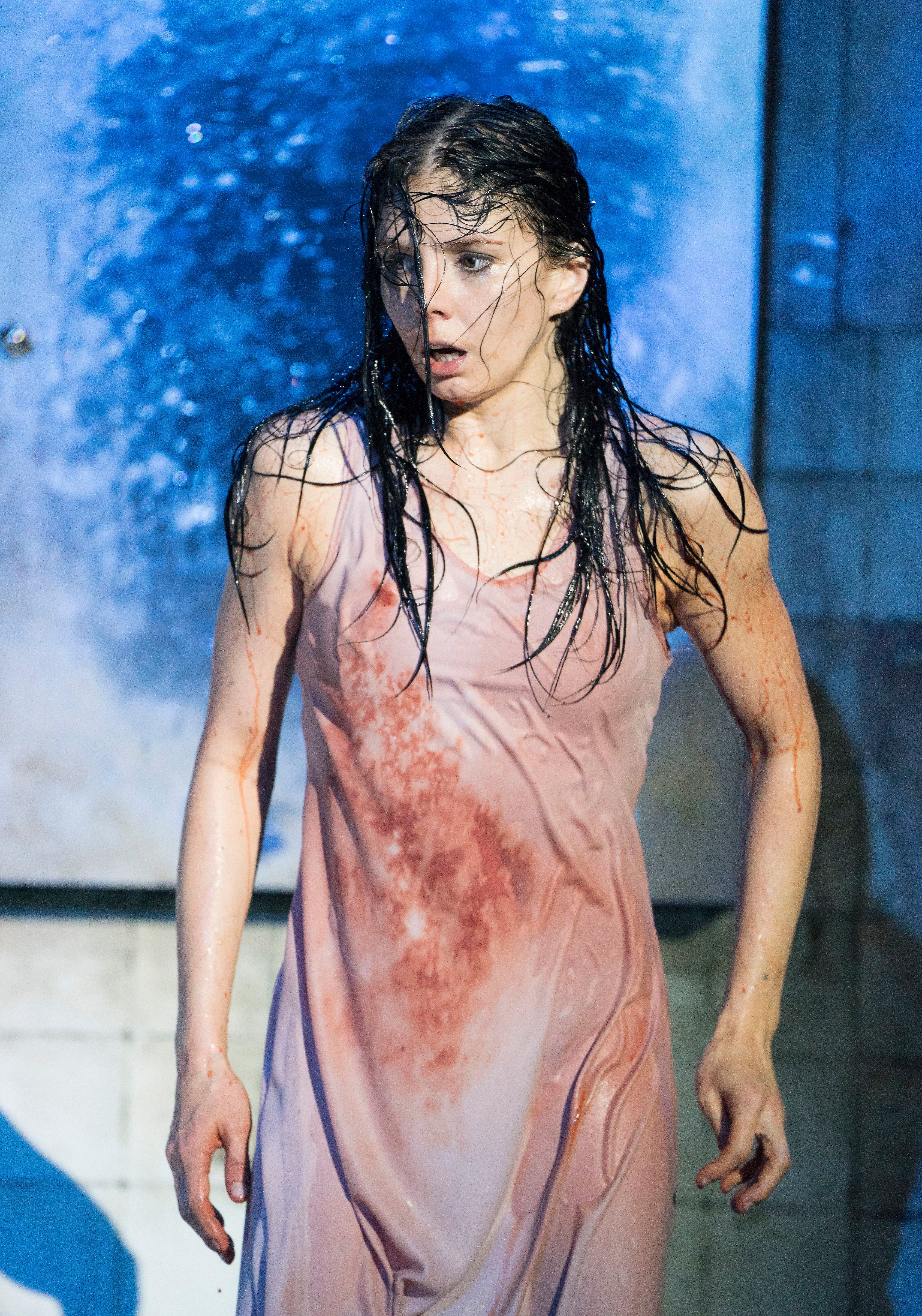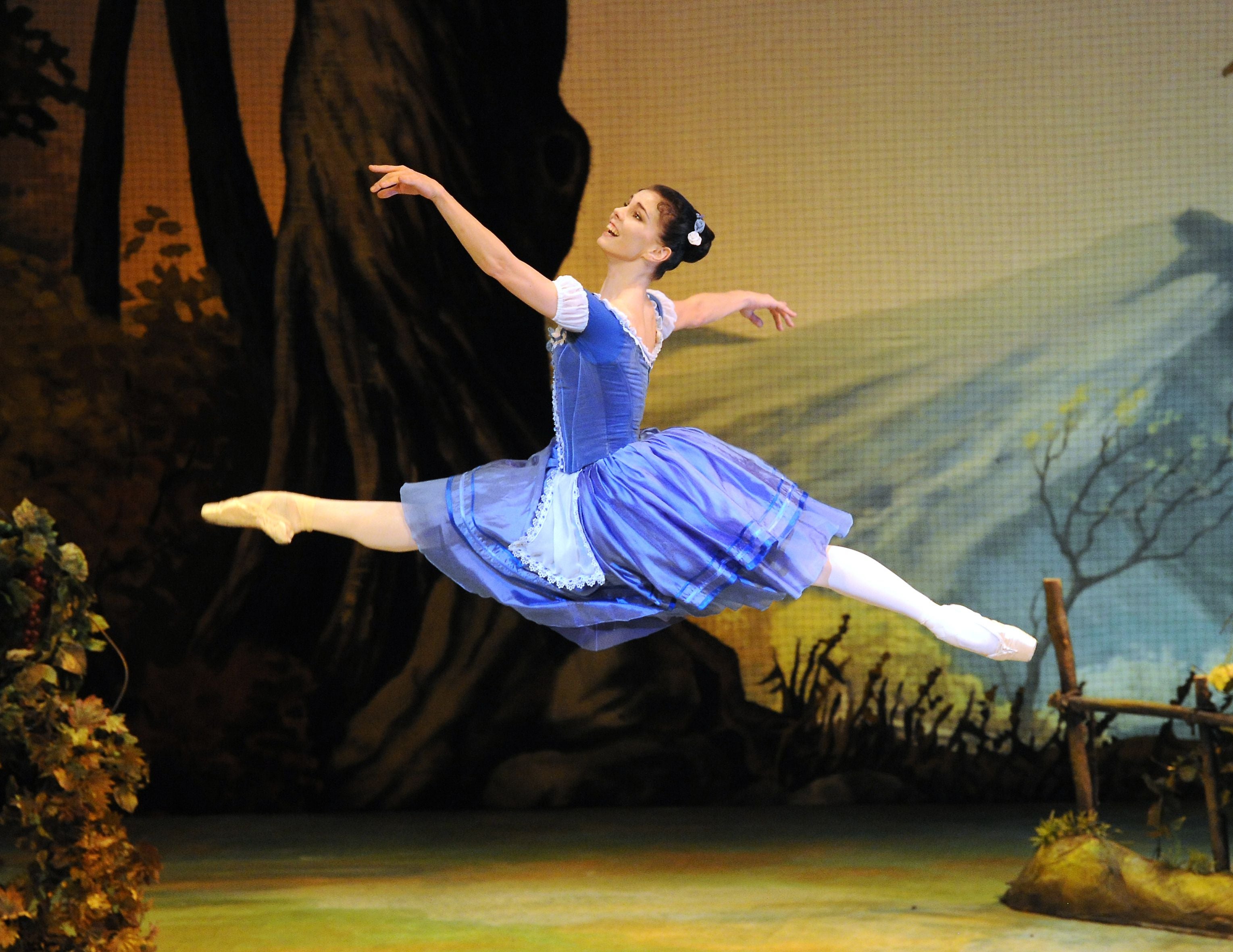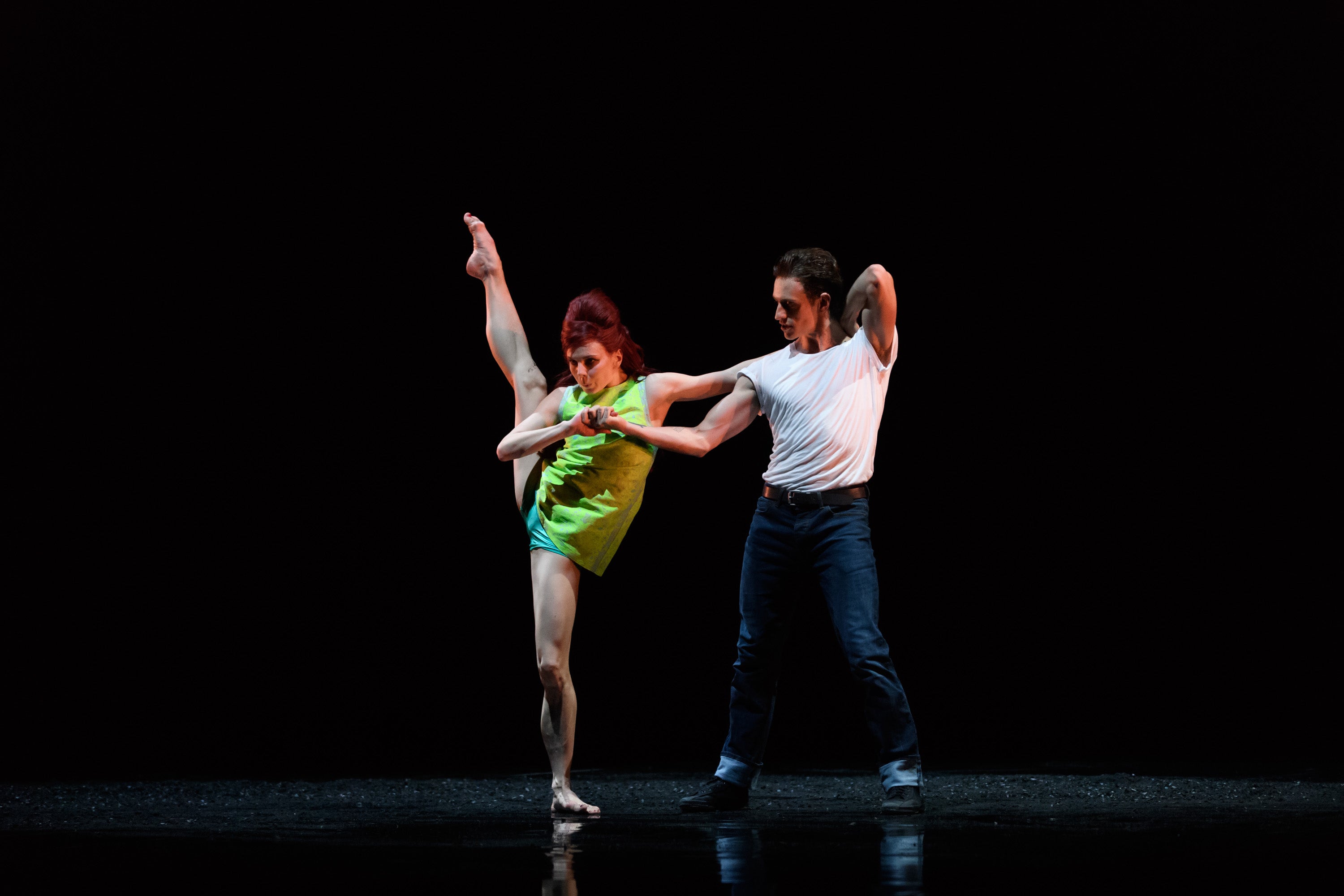Russian ballet star Natalia Osipova: ‘I try not to listen to the news. I don’t want to be political’
The superstar Russian ballerina, who is dancing in ‘Swan Lake’, talks to Charlotte Cripps about the longer lifespans of female ballerinas, her dreams of motherhood, and keeping negativity at bay for her art


Natalia Osipova is sitting in her dressing room surrounded by fan mail. The Russian ballet dancer – ex-Bolshoi prodigy and current principal of the Royal Ballet – is starring in Swan Lake at London’s Royal Opera House, and where she goes, those adoring messages go with her. To her fans, she is not only a superlative ballerina – known for high-springing jumps that make it look as though she’s flying through the air – but an actor who brings depth and drama to every role. Her Swan Lake performance is no different. She’s mesmerising as Odette/Odile, switching from fragile to fiery in a flash. It’s like watching a silent movie star who is doubling as a virtuoso ballerina.
But off stage, the Moscow-born star can’t help but think about what’s going on in her home country, whose leader Vladimir Putin recently launched an invasion of Ukraine. “It’s so sad – so sad,” says the 35-year-old with a thick Russian accent. “I try not to listen to the news. I don’t want to be political. I just want to be a dancer and give my art to make people happy. I don’t want to be around negativity.”
With her black hair loosely tied in a bun, Osipova has an elfin-like quality that belies her athletic strength. She shows me around her dressing room. There is a mountain of baby pink pointe shoes piled high in one corner – over 500 pairs – though they don’t all belong to Osipova, who shares the space with fellow principal Lauren Cuthbertson. Dancers go through about 300 pairs a year on average, but unlike Osipova, who throws her ballet shoes “straight in the trash” after every performance, her roommate likes to pick out an old pair before she dances. “I fought to clear up our dressing room,” says Osipova with a laugh. “But now I can see the shoes are atmospheric. Lauren calls it an art installation.”
Swan Lake, which got a glowing review from The Independent on its opening night when it was danced by Yasmine Naghdi, is “the hardest classical ballet”, says Osipova, whose next performance is 22 March. “I don’t really eat much on the day of the performance as you feel the food inside you as you dance,” she adds. “I try to eat really well the night before – like protein: broccoli and nuts. I eat meat sometimes, but I prefer not to eat meat. It’s so hard for me because I love animals so much. And for me to eat meat is heartbreaking.”
Tchaikovsky’s first ballet – based on a German fairytale – is a physical and emotional marathon, in which Odette, Queen of the Swans, falls in love with Prince Siegfried. Together they battle with the evil sorcerer Von Rothbart, who gets his daughter Odile, the black swan (typically played by the same dancer who plays Odette), to trick the prince into falling in love with her. He has put a spell on Odette, turning her into a swan who can only take human form between midnight and daybreak.
It has a final act that makes Osipova’s heart feel “like it’s breaking” – in the RB’s production Odette kills herself, leaving the prince alone without his true love. The show’s technical highlight, meanwhile, is when Odile seduces the prince with 32 fouettés, meaning Osipova must pirouette on the same spot, round and round, like a mechanical doll, until the very last twirl. “It’s very difficult,” she admits. How does she not get dizzy? She stands up and holds a finger out in front of her. “You always look at the same spot. You just turn and your head comes back like that,” she says, giving me a demo. “But, of course, it involves so much training. We are taught since the age of eight.”
Osipova is a tour de force, redefining the classical roles as her own, whether that’s as an “out-of-this-world Giselle”, as she was described in one five-star review of the RB’s production last year, or as Juliet in their 2019 Romeo and Juliet, where, as it says in another, “Osipova’s silent scream from the tomb wracked her whole body with great waves of horror and despair”.
She has also branched out into contemporary dance. In 2019, she played a wretched mother in Arthur Pita’s critically acclaimed The Mother at the Southbank Centre. She had explosive chemistry on stage at Sadler’s Wells in 2016 during a contemporary dance bill with her then-boyfriend, the Ukrainian-born “bad boy of ballet” Sergei Polunin, who was the youngest ever principal of the Royal Ballet before he walked out in 2012.

Osipova has had her own dramas. She and the Russian ballet star Ivan Vasiliev had previously been the golden couple of the Bolshoi, both on and off stage, until they left the company in 2011 for the smaller and less prestigious Mikhailovsky Ballet in St Petersburg. She cited her unhappiness about being left out from the mainstream classical repertory as one reason for her resignation. She became a principal at American Ballet Theatre, before she joined the RB as a principal in 2013 after appearing, with much fanfare, as a guest artist in Swan Lake with Carlos Acosta. It was around that time that scandal rocked the Bolshoi, when its artistic director Sergei Filin had acid thrown in his face, allegedly ordered by a resentful dancer, Pavel Dmitrichenko, who was later arrested and imprisoned for the brutal attack.
“I was absolutely shocked,” says Osipova. “I knew the people involved well. I worked for the company in the same period. I just can’t believe that it’s possible to take ballet to a criminal level because it’s just art and beauty. I think it was a shock for everybody.”
“The war in Ukraine is so sad – so sad. I try not to listen to the news. I don’t want to be political. I just want to be a dancer and give my art to make people happy. I don’t want to be around negativity.”
Osipova often speaks about ballet like this – with a particular kind of reverence. It has been her lifeblood for nearly two decades now. She made her debut at 19, bursting onto the Moscow stage in Don Quixote as Kitri at the Bolshoi in 2005.
“I remember I was shocked, because I had prepared so long for this role,” she recalls. “Kitri dramatically runs down these little stairs and I fell flat on my face. That was my first 10 seconds on stage. I thought, ‘Oh my God. Oh my God. I’ve fallen.’ Then after that I said to myself, ‘Come on, just dance.’ I just felt so free after I fell. I stopped feeling nervous and it was amazing.”

She could hear the corps de ballet dancers on stage laugh as she fell. “It’s not jealousy. I think it’s just funny. A young girl just comes on stage with so much temperamental energy and just hits the deck.”
But she admits that the Bolshoi was a difficult place to work. It’s a much bigger company than the RB – “with a lot of ambition and ego”, she says. “You need to have a really nice heart. A really nice soul. Not react, you know, when you hear people talking about you badly.”
She once claimed that life on stage isn’t anything like the film Black Swan, starring Natalie Portman, saying “I’ve never seen anyone put glass in another dancer’s pointe shoes” – though she found Portman very believable as a ballerina with an intense inner focus. She too is often consumed by ballet, even at night. “I can’t sleep. I wake up and say, ‘That’s it! Yes, this is feeling right.’ You hear some people say about ballet dancers, ‘She’s crazy, she’s cuckoo,’ but it’s not true. We just have to go so deep into our feelings because we’re not artists who are talking. We need to portray a role through expression and movement.”

Osipova, who lives in north London with her choreographer and contemporary dancer fiancé Jason Kittelberger, and their four dogs, found herself unable to dance in 2020 when this RB revival of Swan Lake was interrupted by the pandemic’s closure of theatres. “It was the first time I haven’t danced for seven or eight years,” she says. “My body really changed. It was really hard to come back.”
Can ballerinas return to work after having a baby like in other jobs? Osipova lights up – “I really want a baby.” Cuthbertson is an inspiration – she has a one-year-old daughter called Peggy, who hangs out in their dressing room. “It’s really changed now. Maybe 10 or 15 years ago, some ballerinas didn’t have babies and you would think, ‘Oh how can I have a baby? How can I come back? It’s going to be so hard.’ I think it’s now completely changed and I’m so happy about this… so many ballerinas have babies – one, two, some have three – and come back on stage. That’s my plan.”

Female dancers also dance until they are much older, she adds. “Women used to leave around 38 or 40 years old. Now, I see dancers that are 45 and older and in fantastic shape,” she says. “With Pilates, vitamins, you can do anything.”
Still, it takes more than pilates, vitamins and even technical skill to make a successful ballet dancer. “Yes, I’m young, I jump, I pirouette quickly, that’s amazing,” says Osipova. “But that’s just technique that you can be taught. Feeling your heart on stage, that’s so hard to teach. You just have this talent or not.”
Natalia Osipova performs in ‘Swan Lake’ on 22 March; the new Kyle Abraham triple bill on 24 March; ‘A Month in the Country’ on 26 April and 2 May.
Join our commenting forum
Join thought-provoking conversations, follow other Independent readers and see their replies
Comments


Bookmark popover
Removed from bookmarks